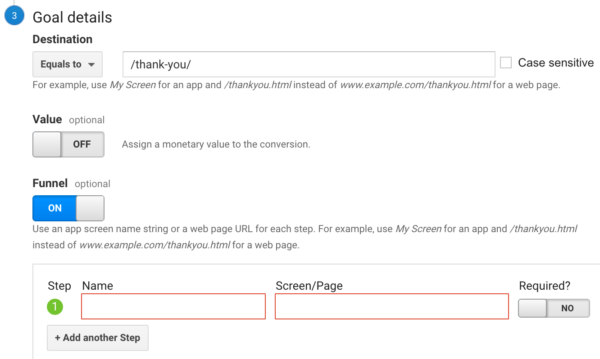Introducing the Blind Attractions: Recognizing What Google Analytics Goals Can not Gauge
In the world of electronic analytics, Google Analytics stands as an effective tool for tracking and analyzing on-line customer communications. Amid its durable abilities, there exist blind spots that commonly escape measurement. what data is google analytics goals unable to track. Recognizing what Google Analytics goals can not measure is crucial for getting a detailed view of customer actions and involvement. As we look into the intricacies of these blind spots, we discover an intricate web of undiscovered territories that hold valuable understandings right into user actions and inspirations, difficult standard wisdom and clarifying the constraints of our data-driven understanding.
Customer Behavior on External Platforms
Understanding exactly how customers connect on outside systems is critical for enhancing online techniques. Outside platforms, such as social media sites networks, recommendation sites, and online forums, play a significant duty in driving website traffic to a company's internet site. By examining individual behavior on these systems, businesses can get beneficial understandings into the efficiency of their advertising and marketing initiatives and the preferences of their target market.
One secret element of individual habits on external platforms is the reference source. By tracking where the users are coming from, services can identify which platforms are driving one of the most traffic to their internet site. This details can aid companies allot their sources better, focusing on the platforms that generate the most effective results.

Offline Conversions and Interactions
Analyzing customer habits on external systems supplies valuable understandings right into on the internet approaches; however, taking into consideration offline conversions and communications is similarly essential for a detailed understanding of a firm's overall performance. While Google Analytics stands out at tracking on the internet interactions, it falls short in catching the full client trip that typically consists of offline touchpoints. Offline conversions, such as in-store acquisitions or phone inquiries, play a significant duty in numerous organizations' success. Ignoring these interactions can lead to an altered view of the performance of advertising projects and total organization efficiency.

Attribution Beyond Last Click
When delving right into the realm of electronic advertising analytics, it comes to be essential to look past the solitary touchpoint of the last click for a much more thorough understanding of acknowledgment. While Google Analytics supplies useful insights right into user actions, relying solely on last-click attribution can be limiting - what data is google analytics goals unable to track. Attribution models that exceed the last click offer an extra nuanced view of the customer journey, thinking about all the touchpoints that cause a conversion
Attribution beyond the last click permits online marketers to assign credit history to numerous interactions along the conversion course, providing a click for more info clearer picture of the effectiveness of various marketing networks. By checking out multi-touch acknowledgment models such as direct, time degeneration, or position-based acknowledgment, services can better allot their marketing budget plans and optimize their approaches for maximum effect.
Comprehending the influence of each touchpoint in the conversion process is critical for making informed choices and maximizing ROI. By accepting attribution beyond the last click, companies can get much deeper insights right into consumer actions and tailor their advertising and marketing efforts better.
Cross-Device and Cross-Browser Tracking

Similarly, cross-browser tracking matches cross-device tracking by capturing helpful hints user actions as they change in between various web browsers. Understanding exactly how customers connect with sites on different browsers can help marketing experts enhance their on-line experiences to guarantee uniformity and performance across various systems.
Qualitative Information and Customer Intent
Recognizing customer intent with qualitative data analysis is important for developing targeted electronic marketing strategies that resonate with the demands and choices of the target market. Qualitative data offers understandings right into the 'why' behind individual actions, clarifying motivations, emotions, and preferences that quantitative information alone can not record. By examining individual feedback, comments, and interactions, marketing professionals can reveal beneficial information regarding individual intent, permitting them to customize their messaging, content, and offerings to much better find line up with what their audience is looking for.
Qualitative data additionally helps in recognizing the context in which users engage with a website or app. This contextual understanding enables marketing professionals to develop even more customized and appropriate experiences, inevitably driving greater interaction and conversion prices. By diving right into individual intent through qualitative information evaluation, companies can obtain a deeper understanding of their target audience, leading to much more efficient marketing strategies that satisfy individuals' needs and assumptions.
Final Thought
Finally, Google Analytics objectives have constraints in gauging individual actions on exterior systems, offline conversions, attribution past last click, cross-device and cross-browser monitoring, and qualitative data related to user intent. what data is google analytics goals unable to track. It is essential for businesses to be familiar with these blind areas in order to supplement their data analysis with other tools and techniques to acquire a more thorough understanding of their target market and boost their general electronic marketing approaches
By assessing individual actions on these systems, organizations can acquire valuable understandings into the performance of their advertising initiatives and the preferences of their target audience.
Assessing user habits on outside systems supplies valuable insights right into on-line strategies; however, considering offline conversions and interactions is equally imperative for a thorough understanding of a company's general efficiency.In electronic advertising and marketing analytics, moving beyond last-click attribution to explore cross-device and cross-browser tracking is essential for acquiring an all natural understanding of customer communications across numerous systems and gadgets. By analyzing user comments, comments, and interactions, marketing professionals can discover valuable details concerning individual intent, permitting them to customize their messaging, content, and offerings to better align with what their audience is seeking.
By delving into individual intent via qualitative data analysis, services can obtain a much deeper understanding of their target audience, leading to extra efficient marketing methods that satisfy users' needs and expectations.